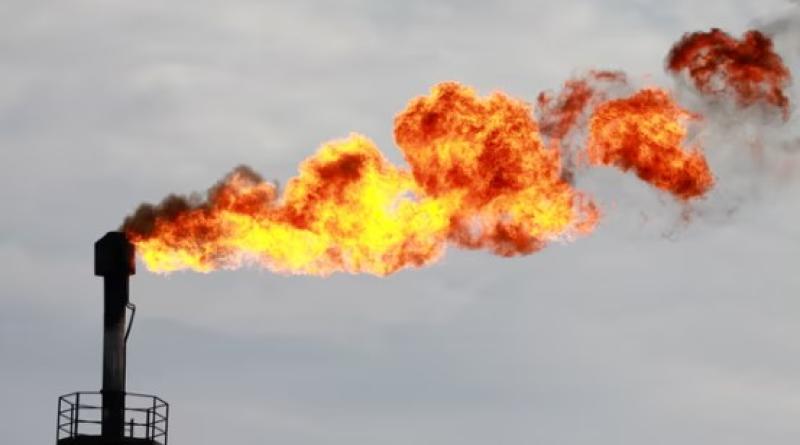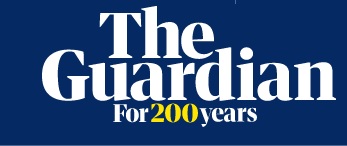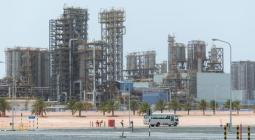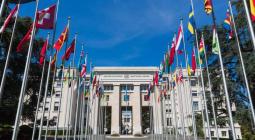Cop28 host UAE breaking its own ban on routine gas flaring, data shows

State-run oil and gas fields in the United Arab Emirates have been flaring gas virtually daily despite having committed 20 years ago to a policy of zero routine flaring, the Guardian can reveal.
The UAE is hosting the UN Cop28 summit, which starts on 30 November, and Sultan Al Jaber, the CEO of the state oil company Adnoc, will preside over the international negotiations to urgently tackle the climate crisis.
Flaring is the burning of extracted gas that is not captured and sold, and it has been called “wasteful and polluting” by the World Bank. Flaring occurs when no equipment has been installed to capture it or when gas has to be unexpectedly released for safety reasons. Flaring also allows the escape of some unburned methane gas, which is a powerful greenhouse gas.
One field, Adnoc LNG, flared gas on more than 99% of the days monitored by satellite from 2018 to 2022, according to data produced for the Guardian by the Centre for Research on Energy and Clean Air (Crea). One expert said this was routine flaring “by any normal definition”.
The analysis assessed flaring in 32 oil and gas fields in the UAE, 20 of which are run by Adnoc. It shows four fields flared on at least 97% of the days for which data was available, which was most days as measurements were interrupted by cloud cover on only one day in five.
The World Bank runs an initiative to achieve zero routine flaring by 2030. The UAE and Adnoc are not members, though nearby states and companies are, including Bahrain and Saudi Aramco.
A spokesperson for Adnoc said the data was “misleading as satellite images may not distinguish between flaring or having a pilot flame ignited as part of normal operations”. However, several experts said pilot flames were unlikely to explain the near daily flame detections. Adnoc did not respond to a request for data on the company’s use of pilot flames.
“You wouldn’t normally see pilot flames from space,” said Dr Paul Balcombe, of Queen Mary University of London, who was not involved in producing the Crea data. “A pilot flame would have to be really big to be seen, in which case we still have a problem with large and unnecessary emissions.”
All fields will have pilot flames for safety reasons and most UAE fields do not show near daily flaring.
“Flaring of gas has a massive impact, about 1-2% of total global greenhouse gas emissions, and the vast majority of it is avoidable,” Balcombe said. “We have the technology to reduce all flaring and we can pretty much eliminate non-emergency flaring at moderate cost. The positive side is that our satellite capability for monitoring flaring and methane emissions is improving, so we are more able to hold companies to account.”
Hubert Thieriot, of Crea, who produced the flaring data, said: “As the host of the upcoming Cop28, it is critical that UAE further strengthens and respects its commitments if it wants to play a leader’s role in reducing flaring.”
Pascoe Sabido, of Corporate Europe Observatory and a co-coordinator of the Kick Big Polluters Out coalition of more than 450 organisations, said: “This data shows how meaningless oil and gas company commitments are when they’re voluntary and self-reported. The industry cannot be trusted as a partner in phasing out fossil fuels, which is why it should not be allowed into the climate talks, let alone chairing them.”
‘First mover’
Adnoc stated previously on its “minimising flaring” webpage that “implementation of a zero routine gas flaring policy, in the early 2000s, was a major milestone on our path to eliminate flaring”. The webpage stopped providing any content sometime in July or August, although the claim was repeated in a 2022 press release that is still live. Al Jaber said earlier this year that Adnoc had been a “first mover in zero routine flaring”.
Some of the UAE fields with frequent flaring are run by another state-owned company, Dubai Petroleum, which says it is committed to an aim to “minimise flaring”. Flaring usually burns gas released while drilling primarily for oil. It can also occur at LNG plants, which compress gas into a liquid for export.
The data shows flaring on at least 97% of days from 2018 to 2022 from Adnoc’s LNG and Umm Al Dalkh fields, and from Dubai Petroleum’s Rashid and Fateh fields. Flaring took place on more than 50% of days in three places: Adnoc’s Al Dabbiya and Al Nouf fields, which are close together, Adnoc’s Bu Hasa field and Dubai Petroleum’s Fateh South West field. All seven of these sites were in the top half of fields ranked by the volume of gas flared.
Satellite data for 2023, running to 12 October, shows a reduction in the frequency of flaring. The sites previously flaring on 97% of days dropped to flaring on 65-75% of days. For the other three fields, the decline in flaring frequency began in 2020 or 2022.
An Adnoc spokesperson said: “Adnoc’s zero routine flaring policy, established over 20 years ago, is strictly focused on eliminating routine flaring. Non-routine and safety flares are essential to maintain facility integrity, ensure safe operations and prevent uncontrolled emergencies. We are committed to continuous improvement as we progressively retrofit our legacy facilities and deploy the latest technologies to further enhance our flaring performance.”
‘Extremely woolly’
The World Bank’s definition of routine flaring is “flaring during normal oil production operations in the absence of sufficient facilities or amenable geology to re-inject the produced gas, utilise it on site or dispatch it to a market”.
Two experts on flaring said the definition was “extremely lax” and “extremely woolly”. One, who asked not to be named, said: “The UAE may claim they are not doing routine flaring but the data does not support their claims. By any normal definition, it is routine flaring.”
The second expert said: “Effectively a company can justify whatever practice they had already within the definition. That is ridiculous.”
Zubin Bamji, of the World Bank, said: “With [satellite] data we can say, with a high degree of confidence, when any of the more than 10,000 flares worldwide are active. However, typically only the operator or regulator on the ground can establish whether flaring is routine, non-routine or safety-related.” He said the European Commission used the same definition of routine flaring.
Overall, the UAE has relatively low levels of flaring for a fossil fuel-producing state, ranking 27th in a World Bank list of countries ranked by flare volume from 2018 to 2022. The World Bank data shows no significant change in annual flare gas volumes in the UAE over the last decade.
Mark Davis, of Capterio, a flare gas recovery company, said: “It is excellent to see the good progress the UAE has made on flaring reduction – from 15bn cubic metres in the 1970s to 1bn today. But within the UAE there are doubtless many opportunities to reduce flaring and improve operational performance.”
Reporting failure
The UAE site flaring the most gas from 2018 to 2023 was Adnoc LNG, which led to about 2.5m tonnes of carbon dioxide entering the atmosphere. Adnoc said in 2022 that it aimed to almost double its LNG export capacity. The Guardian revealed in August that the UAE had failed to report its emissions of methane to the UN for almost a decade.
Hosting the Cop28 climate summit has focused attention on the country’s environmental performance. Al Jaber recently told the 196 countries attending Cop28 that “the phasing down [of] demand for and supply of all fossil fuels is inevitable and essential”. The Cop28 office and Dubai Petroleum did not respond to requests for comment on the flaring data.
Scientists are clear that exploitation of new oil and gas fields is incompatible with keeping global heating to below the 1.5C target and that most existing reserves need to stay in the ground. Data published on Wednesday shows that the UAE has the biggest net-zero-busting expansion plans of any company in the world. The Guardian revealed in June that the Cop28 office’s emails were sent via Adnoc servers and had therefore been visible to the company until the Guardian raised the issue.
The Crea data was produced using publicly available data collected by the visual and infrared radiometer suite of instruments mounted on the Suomi NPP satellite. The instruments detect points of intense heat from flares.
This data was converted into flare gas volumes using a published methodology that is also used in World Bank analyses. The results were cross-checked against annual flare volume data produced by the World Bank and were in close agreement.
Photograph: Alexey Solodov





